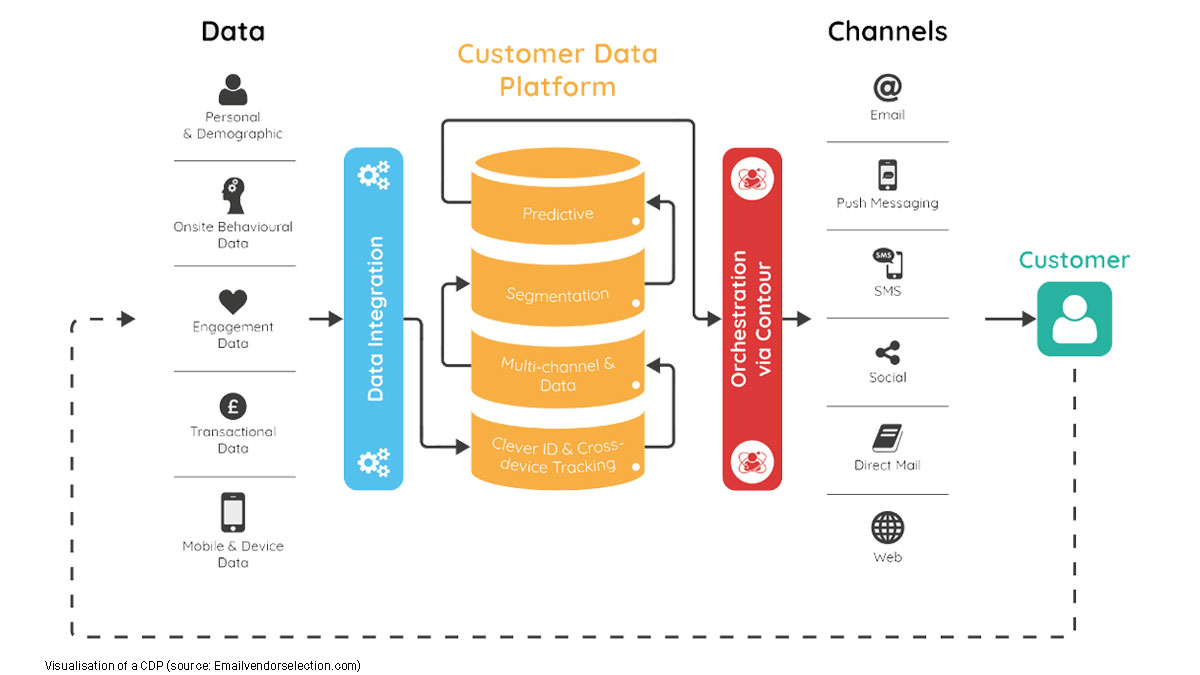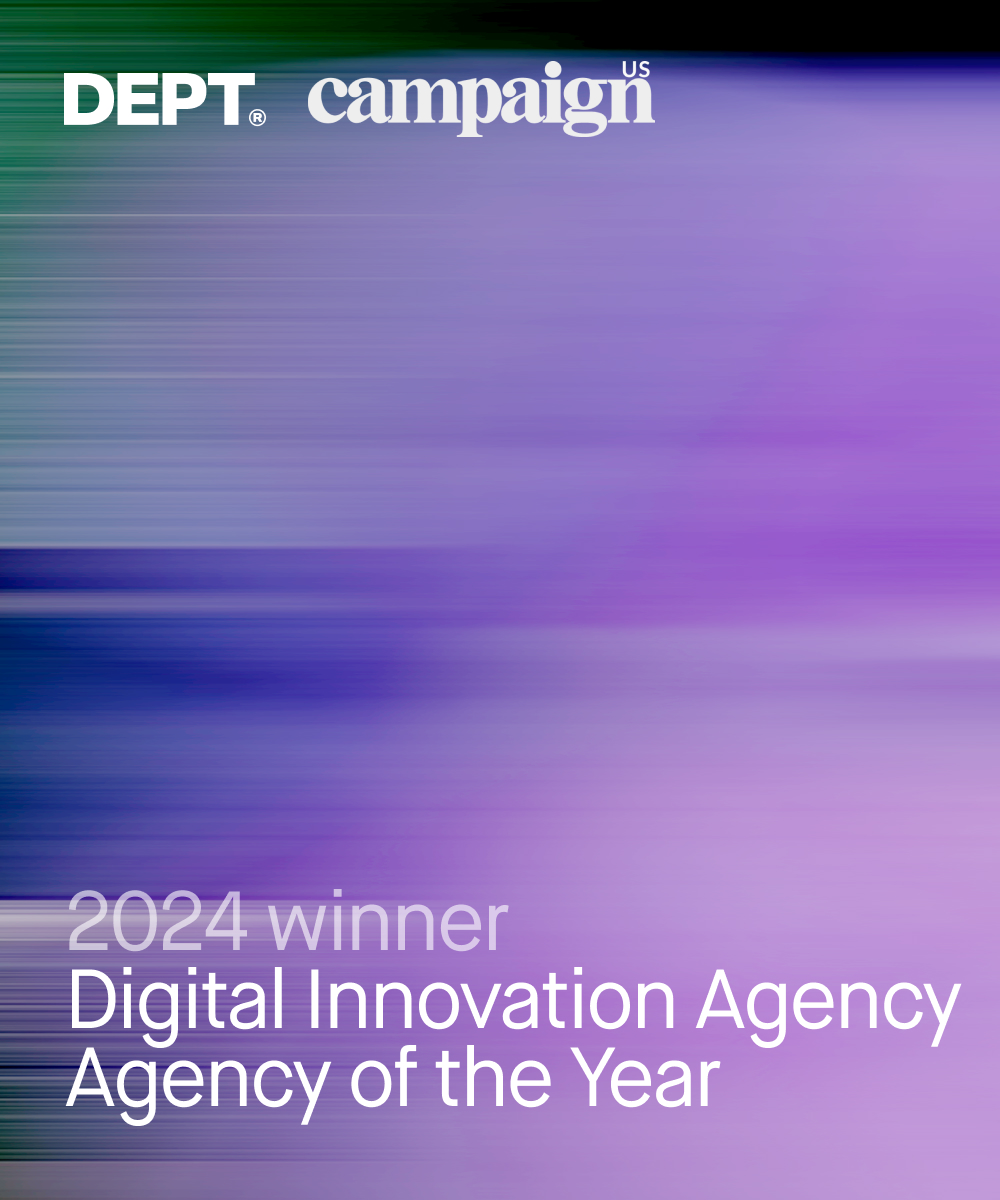Marketers now have more TLAs (three letter acronyms) than you can shake a stick at. CRM, DMP, DSP, CMS and the relatively new one on the block, CDP. For those that don’t know, CDP stands for Customer Data Platform. If this is a new TLA for you, you’ll certainly be hearing more about them in the coming months; they’re on the up in 2019 and definitely deserve a spot on your MarTech consideration list.
Customer Data Platforms have broadly been established as an industry-wide technology since 2013, when David Raab founded the CDP Institute. Yes, CDPs existed before this, but Raab helped build traction, interest, and provided an understanding which helped to define and clarify the CDP proposition.
In recent years, marketing has started to shift closer to technology and IT teams (uncomfortably close for some organisations). Marketing Technology now consumes about 23% of marketing budgets . This fine line is only going to get finer as marketers look to leverage data and technology to improve performance. Warc estimates that MarTech budgets will increase another 25% across North America and the UK in 2019 too.
What’s this growth got to do with CDPs? Over the last few years, much of the investment from marketeers has been across four common areas:
Integration
iPaaS and Integration platforms have helped marketers and technologist to move, transform, load, query and connect data at speed using the power of APIs and the cloud. This is allowing businesses to build tech platforms with tools of their choosing, rather than opting for the tools which natively work well together. Ultimately, we can act on data faster and create cleaner and more consistent collection processes. This allows us to create functionality, platforms and campaigns which provide both commercial and customer benefit if done correctly. It’s a market estimated to be worth $2 billion in 2023 (Reuters, 2018), with players like Salesforce, Oracle, IBM and Dell making strides to dominate the top spot.
BI & analytics
Tableau, Qlik, PowerBI, Datorama, to name but a few. If you’re reading this, there’s a very good chance your business is using one of these. If you’re an agency or consultant, your clients are most likely using one or more. These tools are helping businesses to query and integrate data to provide more intricate, visual and faster reporting from multiple sources and large data sources. It’s a market that was worth $15 Billion in 2016, estimated to grow to $29 Billion by 2022 (Reuters, 2017).
Customer identity
The elusive and ever-evolving single customer view. Understanding customers across channels, platforms and devices has been on marketers’ minds since the concept of a single customer view came around. What started off with simple tokenisation tactics and methods, has now turned into a complex process of combining and merging customer keys and identifiers based on data passed from platforms tags. Two years ago, SAP snapped up Customer Identify leader Gigya for $350 million. At the time of the acquisition, Gigya managed 1.3 Billion customer ‘identities’ on its platform.
Data technologies
Data technologies (like cloud databases and data streaming tools) and the infrastructure they provide helps underpin many of the other key areas above, such as BI & Analytics and Integration. Moving to more agile and scalable cloud databases has been high on the agenda for a while now. These technologies have helped businesses be more agile when it comes to data and tech development, data access and analytics. Not to mention that it also allows businesses to work easily with most of the Artificial Intelligence and Machine Learning platforms that are sitting on some of the major cloud vendor stacks. According to Reuters, the Cloud Database Market will be worth an estimated $21 Billion in 2023.
What’s this got to do with a customer data platform?
A customer data platform as defined by the CDP Institute is: “A packaged software that creates a persistent, unified customer database that is accessible to other systems”. This brief summary alone includes three of the four technologies mentioned above:
- Persistent, unified customer = Customer Identity.
- Customer database = Data Technologies.
- Accessible to other systems = Integration.

Among vendors, consultants and specialists there’s an argument to say that, based on the above, Analytics & BI doesn’t directly fall into the CDP however, there’s no doubt that those three elements are key to creating mature analytics and BI platforms. If you’re striving to create a system that meets best-in-class criteria, then integration of Analytics & BI is no brainer for software and SaaS providers, and it’s something that Marketers are likely to opt for too. Of course, businesses always have the option to use their own because it’s built to integrate with other platforms.
A CDP combines many of the popular (but commonly siloed) tools that are built for marketers to help take control of their customer data in a more agile fashion. It’s a marketer-owned data warehouse that tries to avoid IT complexity. It gives ownership of data and insight so it can be used for campaigns, personalisation and customer experience across customer touchpoints.
Without a doubt, a CDP could be a valuable asset for some businesses that are looking for streamlined and updated technology stacks, but there will also be a number of businesses out there who are ahead of the CDP game. They will have used a modern infrastructure, platforms and tools to build a custom solution more appropriate for their needs. However, this approach isn’t always appropriate for companies that want the efficiencies and internal operating model that SaaS platforms allow.
Pure-play digital giants such as Amazon, Google, Netflix, Uber, Deliveroo all have powerful CDPs that fuel the functionality and personalised customer experiences that so many businesses covet. Companies that are considered best in class when it comes to data-driven marketing account for just 2% of the market. It’s found that these companies are making on average 20% more in revenues and a 30% reduction in costs saving. Do not underestimate the importance and potential benefits a good data infrastructure can have for your business.
The CDP market grew 65% in 2018 and, in the last few weeks, Salesforce and Adobe have both announced that they’ll be releasing market leading CDP products this year. With two of MarTech’s biggest names releasing products, it’s bound to provide attention, focus and encourage discussion more than ever. Expect to see CDP making its way into a lot more RFPs than previous years.
More Insights?
View all InsightsQuestions?
Global SVP Technology & Engineering





